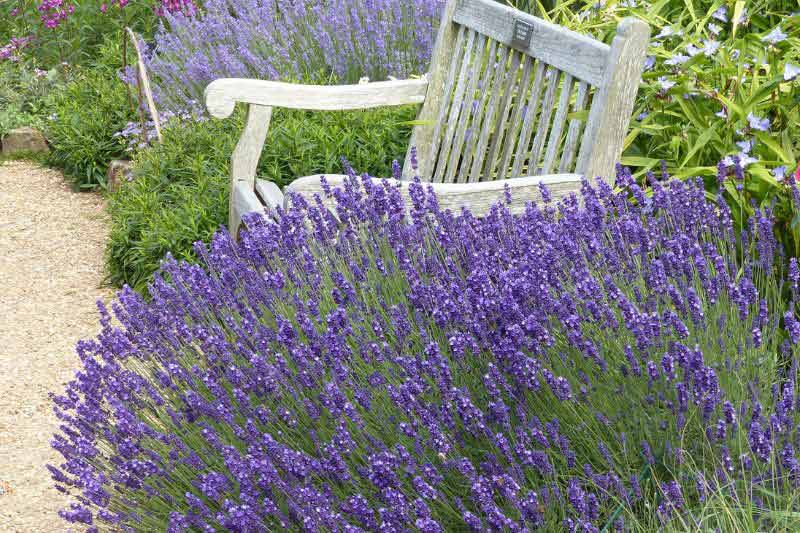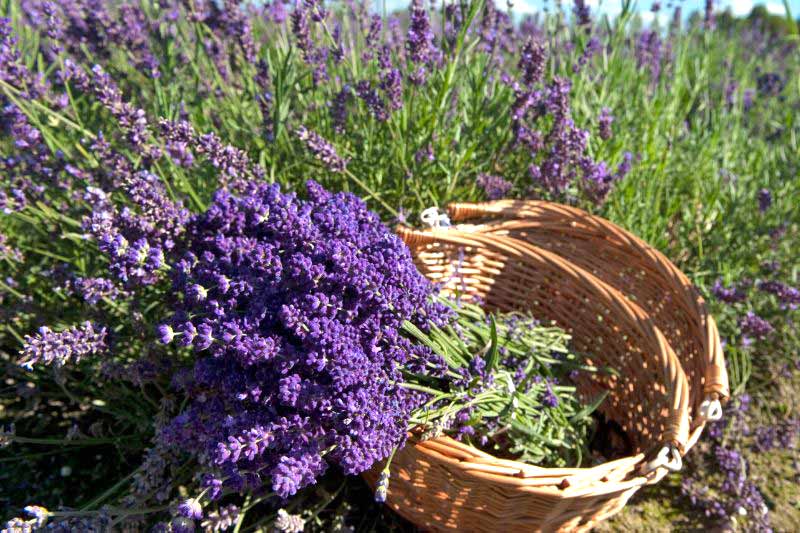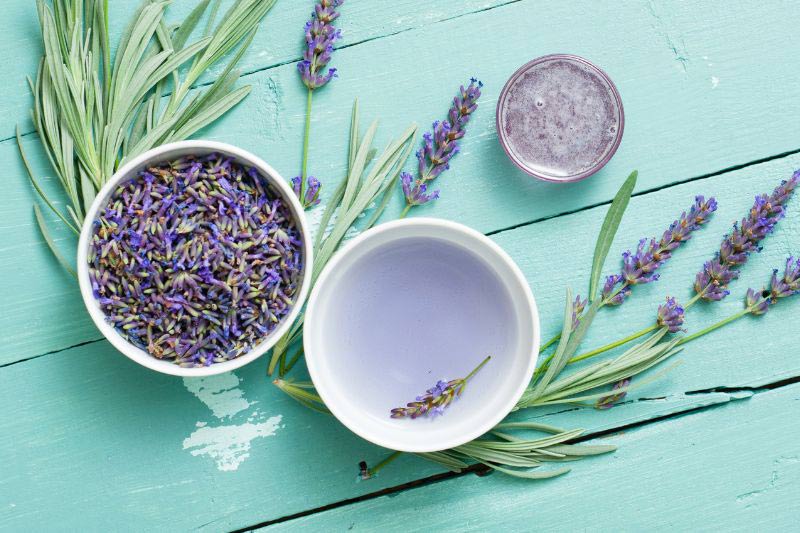Whether for its beautiful flower spikes or its unmistakable scent, we love lavender. Aromatic plant credited with many therapeutic characteristics, this Mediterranean perennial can be used fresh or dried. We find it in scented sachets or summer dried bouquets, but also for culinary, cosmetic or medicinal use. It allows among other things to prepare delicious infusions that are easy and quick to make, as well as being reputed for their benefits.
Let’s see how to harvest, store and use lavender in infusion or decoction.
Which lavender varieties to choose?
There are different species of lavender, the most widespread and well known being: French lavender (Lavandula stoechas), English lavender (Lavandula dentata), spike lavender (Lavandula latifolia), or lavender officinal (Lavandula angustifolia). For making an infusion, this species is preferred, also known as "true lavender" or "fine lavender".
There are several cultivars, all very aromatic, such as ‘Essence Purple’, ‘Siesta’, ‘Hidcote’, ‘Rosea’ or ‘Artic Snow’. Colour of the spikes varies from the emblematic blue‑violet to pink or delicate white, but the characteristic scent remains very similar.
For any culinary or cosmetic use, we recommend favouring lavenders grown organically, without pesticidal products or other chemicals.

Not only highly ornamental, Lavandula angustifolia or true lavender is also prized for its aromatic qualities
When and how to harvest lavender?
Harvest lavender during summer flowering. Picking just before full flower opening, in early summer (between June and July depending on region), will give a more intense scent.
For harvesting, use scissors or a pruning shear that is sharp and disinfected beforehand to avoid spreading disease. Cut stems above the leaves.
Work in the morning on a dry day, when the plant’s essential oils will be most concentrated.

Preferably harvest lavender in the morning
How to dry and store lavender?
Lavender flowers can be used fresh, but they will deteriorate quite quickly. For long‑term storage without altering their essential oils, we recommend air‑drying them.
Flat drying
- Lay all flower spikes flat, without overlapping, on a tray or crate lined with newspaper or a plain sheet.
- Place them in a warm, ventilated spot out of direct sunlight.
- After a few days, turn the spikes for even drying.
Bundled drying
- If necessary, trim stems so they are a uniform length for bundling.
- Make small bundles about 3 cm in diameter by gathering stems together.
- Tie them with string, an elastic band or a strip of raffia.
- Hang bundles upside down, suspended from a small nail, in a dry, airy place.
Make sure bundles are not packed too tightly to allow good air circulation and optimal drying without mould risk.
Storing dried lavender
Once flowers are fully dry (about 2–3 weeks depending on ambient temperature), they will crumble to the touch. You can then strip the flowers by hand over a work surface or cut stems to keep whole flowers.
Place dried lavender in a paper bag properly closed or in food‑grade container (tin box or airtight jar). Store in a dry place away from moisture and sunlight.
Lavender will keep for about 1 year before losing its aromatic power.
Enjoying lavender’s benefits as an infusion
Various virtues attributed to lavender
Among plants credited with many health benefits, lavender is certainly one of the best known. The plant has been used since Antiquity for its scent and for the therapeutic characteristics associated with it. Today it is essential in aromatherapy thanks to the strength of its essential oils.
Lavender is said to be:
- calming, relaxing
- sedative
- healing
- antiseptic
- antibacterial
- anti‑inflammatory
- antispasmodic
- diuretic
Ask a doctor before use, especially in case of medical history, pregnancy, breastfeeding or for young children.
Lavender infusion
- In a cup (about 150 mL of water), place one teaspoon of dried lavender flowers.
- Add water brought to the boil.
- Leave to infuse for 10 minutes before straining (or use a tea infuser that can simply be removed from the cup).
You can flavour your infusion by adding other aromatics and dried flowers (lemon balm, lemongrass, thyme, sage, chamomile, …), honey, ginger or even slices of citrus trees.
You can drink 2 to 3 cups of infusion a day, especially in the evening before bedtime. Lavender infusion can be taken hot or cold.

Very easy to make, an infusion lets you enjoy lavender’s many benefits
Beyond its delicate taste and the hydration it provides, lavender infusion may help fight stress and anxiety by calming the nervous system. It may help soothe migraines, aid digestion and improve sleep quality. It may also help relieve respiratory conditions (bronchitis, sore throats, flu‑like symptoms, sinusitis, …) and support the immune system.
Lavender decoction
For a decoction, stems and leaves may be kept as well as flowers to extract as many active principles from the plant as possible.
- In a saucepan, put about 50 g of dried lavender.
- Add 1 litre of cold water and bring to the boil.
- Allow to boil for about 5 minutes.
- Remove from heat and let cool.
- Strain.
Lavender decoction can be used for rubbing and massage. It may soothe an insect sting, help heal minor burns, cuts or scrapes, or relieve sprains, strains and aching muscles.
In cosmetic use, it may calm the skin, reduce redness, speed healing of acne spots and soothe the scalp. Use as a spray.































![[plantes nom="lavande"] est une plante aux multiples vertus, notamment pour la relaxation et le bien-être. Voici comment préparer une tisane de lavande :
Ingrédients :
- 1 cuillère à café de fleurs de [plantes nom="lavande"] séchées
- 250 ml d'eau bouillante
Instructions :
1. Dans une tasse, mettez les fleurs de [plantes nom="lavande"] séchées.
2. Versez l'eau bouillante sur les fleurs.
3. Laissez infuser pendant environ 5 minutes.
4. Filtrez et dégustez votre tisane de [plantes nom="lavande"].
Cette tisane est parfaite pour se détendre après une longue journée de travail ou pour favoriser un sommeil réparateur. Lavender Infusion](https://en.promessedefleurs.eu/blogwp/wp-content/uploads/2022/06/Comment-faire-une-tisane-de-lavande-.jpg)
Comments